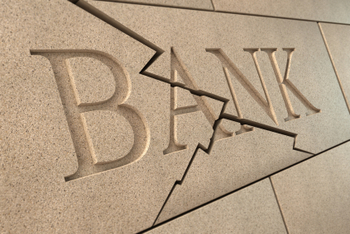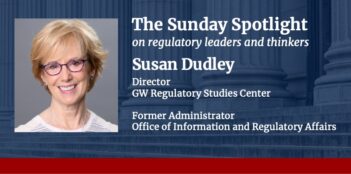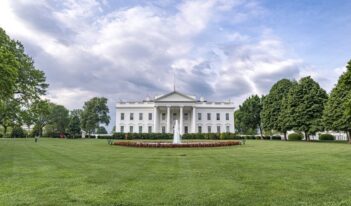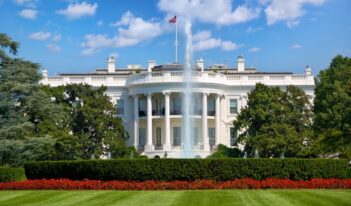
OLA applies an ill-fitting model to financial distress resolution and produces troubling participatory effects.
When a firm is in financial trouble, its stakeholders—e.g., a debtor and its creditors—participate in fixing the problem in different ways depending on the institutional context. To generalize, they participate: (i) in the market, through renegotiation (“workouts”) of debt contracts; (ii) in bankruptcy court, if the workout does not actually work; (iii) in community, if there are the right levels of trust and reciprocity; and (iv) in government, by influencing the legal infrastructure within which such problems are resolved.
No single institution is likely to solve all types of financial distress. But some (or some combinations) are better than others, depending on the number of stakeholders involved, the complexity of the relationships, and so on.
An important, but underappreciated, consequence of the 2008 financial crisis has been a shift in institutional choice when confronting problems of financial distress. Historically, this was the work of markets, courts, and communities. Increasingly, however, government—in both legislative and regulatory capacities—displaces these other institutional choices. Why is this, and what does it mean?
The institutional shift towards government is due in important part to Dodd-Frank’s “orderly liquidation authority” (OLA), which is designed to displace other social institutions as viable choices to resolve financial distress for “systemically important” financial firms.
Dodd-Frank’s OLA would apply a bank-failure model of distress resolution to an ill-defined class of “systemically important” financial services firms. The bank-failure regime is predicated on little or no stakeholder participation. When a federally regulated bank fails, it is usually seized quietly in the night by regulators in order to avoid a panic among depositors, often the bank’s largest creditors (and whose deposits are usually insured by the FDIC).
This is among the least participatory resolution regimes one could imagine. We tolerate this, however, because when confronting bank failure, government is in effect responding to another, bigger participatory failure: it is protecting widely dispersed, under-informed depositors, who are in no position to negotiate with their banks. Instead, depositors panic, which is what we want to avoid in the first place.
The problem with Dodd-Frank is that we don’t actually know when (or whether) the government would use the OLA. In theory, federal regulators closely monitor banks so that they can quickly resolve their distress before it becomes known (in order to prevent a panic). Banks cannot be debtors in a bankruptcy court because, among other reasons, we don’t want to preempt regulators from this important task. Troubled banks thus have few institutional choices, but we tolerate this for a variety of fairly sound reasons.
Dodd-Frank would use the same tool—quick seizure—for a different class of firms (non-bank financial services firms), but without the other tools government uses in the bank failure regime. Unlike with federally-regulated banks, we will not know ex ante which firms might be seized under OLA, what criteria the government will use to decide whether or when to seize such a firm, or with what effect. To date, regulators have been slow to provide clarifications on these questions.
To be sure, Dodd-Frank does include checks and balances. Several regulators must agree on whether to seize a firm, consult with the President, and subject their decision to 24-hour judicial review. But many understandably doubt the effectiveness of these checks when the government has yet to define to whom the authority applies, or how it will apply.
The OLA has at least two troubling participatory effects. First, it will deter workouts that might otherwise occur if a financial firm encounters trouble. Given the OLA, an important but indeterminate class of firms—and their counterparties—may not be willing or able to renegotiate obligations, because the government retains the discretion to seize firms at any point and upset the workout. Who would bother to try a workout knowing this?
Second, and more important, Dodd-Frank’s OLA creates a potential domino effect. Given the complexity, interconnectedness, and uncertainty of modern financial markets, it seems implausible that in a real crisis, government will be able to seize only one firm. Instead, it will likely have to seize—or at least deal with—the failing firm’s counterparties, perhaps the counterparties of those counterparties, and so on. In other words, if government actually used the OLA in the cases for which it was designed, it could easily create cascades of failures.
One can thus easily imagine that government will seek to avoid using this power. What, then, can it do to avoid large-scale market collapses? It may have to engage in more of the very bailouts Dodd-Frank was designed to end. But this simply means that we have created a failure regime that gives government more power, but that is less likely to work when it matters most. It is, in other words, likely to fail at failure.
This is not to say that government should have no role in resolving distress. It can facilitate workouts that have stalled where bankruptcy may be problematic. This may well be coupled with “bailouts” where such investments are warranted. The government’s ability to “knock heads” to resolve the 1998 collapse of Long Term Capital Management, a failed hedge fund, and even the federal government’s tight control of (and investments in) the auto-maker bankruptcies, are good examples of this.
Financial failure is an inevitable part of life in any complex commercial system. Thus, the important question is not whether firms will fail, but how they will do so. How they do so is significantly a question of institutional choice. Failing to appreciate the institutional choices presented by financial distress may be the greatest failure of all.




